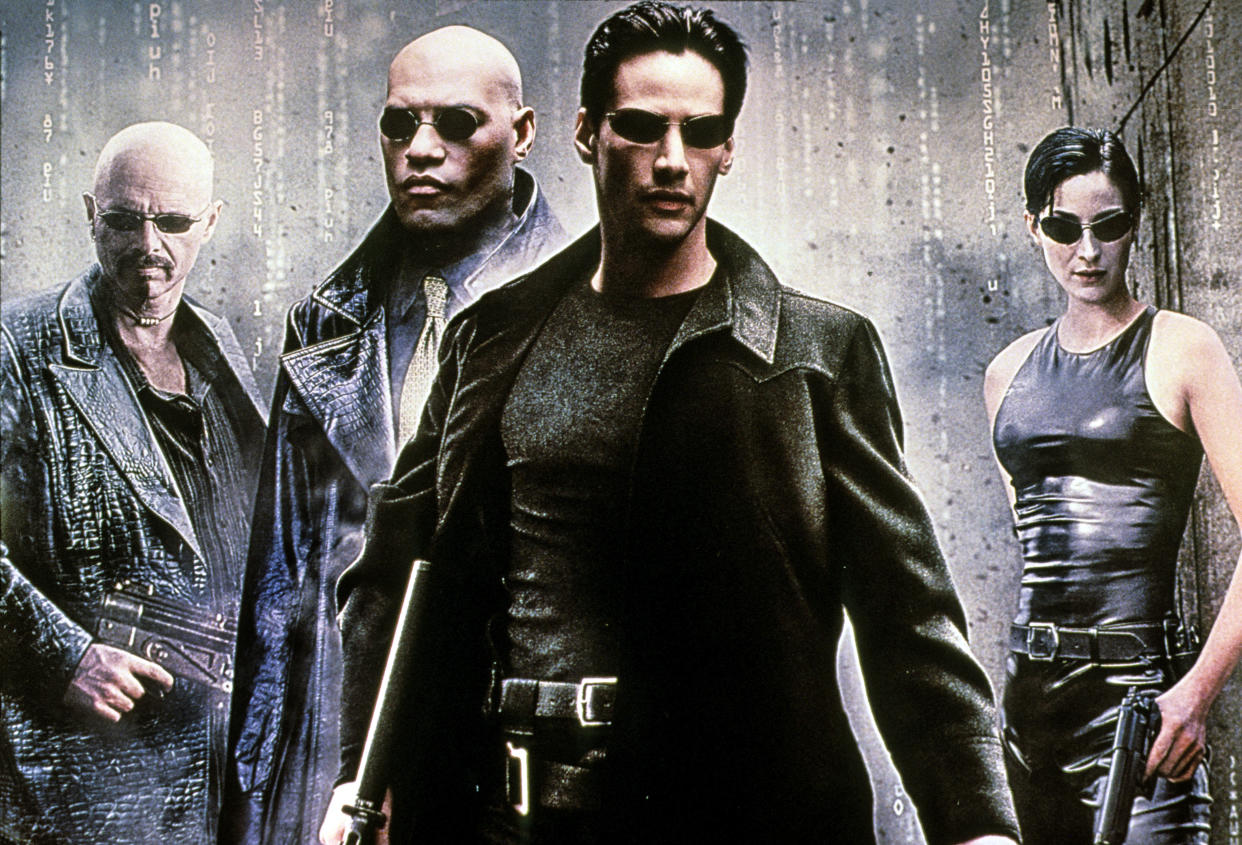‘The Matrix’ Turns 25: 10 Things You Didn’t Know About the Wachowskis’ Masterpiece

- Oops!Something went wrong.Please try again later.
- Oops!Something went wrong.Please try again later.
1999 was famously a great year for film, and it’s hard to pick what masterpiece from that year stands out as the greatest. Is it Paul Thomas Anderson’s “Magnolia”? Stanley Kubrick’s “Eyes Wide Shut”? Spike Jonze’s “Being John Malkovich”? One could reasonably come up with hundreds of answers (even the teen films that year were pretty great), but it’s hard to deny the most influential film of the year came from Lana and Lilly Wachowski.
On March 24, 1999, the Wachowskis invited America into “The Matrix:” a speculative science fiction world where the reality as we know it is all a lie. In the martial arts sci-fi saga, computer programmer and hacker Neo (Keanu Reeves, in the definitive role of his entire career, sorry John Wick) discovers that the peaceful world he lives in — a world that heavily resembles 1999 North America — is a simulation created by self-aware machines that went to war with their makers and won, trapping all of humanity as an energy source bred in tubes and leaving them unaware of their imprisonment by offering them an illusionary world. Joining a rebellion against the machines, Neo discovers that he is “the One,” the person fated to free mankind, and goes to war against the Matrix programming, including the sinister AI Agent Smith (Hugo Weaving).
More from IndieWire
Also starring Carrie-Anne Moss as Neo’s love interest Trinity and Laurence Fishburne as leader and mentor Morpheus, ‘The Matrix’ received critical acclaim the minute it was released, thanks to its innovative blend of cyberpunk trappings, anime and martial arts-inspired fight choreography, and philosophical musings about the nature of reality. On a $63 million budget, it grossed $467 million worldwide, and several of its scenes (particularly that famous bullet time scene) pretty much immediately became the stuff “great movie moments” montages are made of.
History is filled with movies that were big in their moment but faded away almost immediately. That didn’t happen with “The Matrix.” As divisive as the sequels “Reloaded” and “Revolutions” were when they premiered in 2002 and 2003, the franchise never really went away, and its setting lingered in the popular imagination. The use of slo-mo action heavily inspired numerous future action films, and its fight choreography lineage can be seen in films like “John Wick.” If anything, the film has grown in influence since it first premiered and everybody has gotten more and more online: infamously, Morpheus’ offer to Neo to “take the red pill” has been repurposed by online right-wing sexist groups. (Imagine, in 1999 the term “red state” had not yet even entered the popular imagination.)
More positively, the film has gained new resonance in recent years as a trans allegory, a reading that has increased in popularity as both directors have come out in the decades since and after they used “The Matrix” cred to chase their muse with ambitious projects such as “Speed Racer,” “Cloud Atlas,” and “Sense8.” In 2021, Lana Wachowski revisited the franchise with “The Matrix Resurrections,” which proved that the franchise still has some juice left in it. There doesn’t seem much of a plan for a sequel to “Resurrections,” but if one should arise, it’s a sure bet that it will, at minimum, at least be interesting.
With the 25th anniversary of the film’s world premiere on March 24, IndieWire decided to revisit “The Matrix,” and dig into some behind-the-scenes facts behind the making of the seminal sci-fi classic. Here are 10 things you never knew about “The Matrix.”
Best of IndieWire
Sign up for Indiewire's Newsletter. For the latest news, follow us on Facebook, Twitter, and Instagram.

